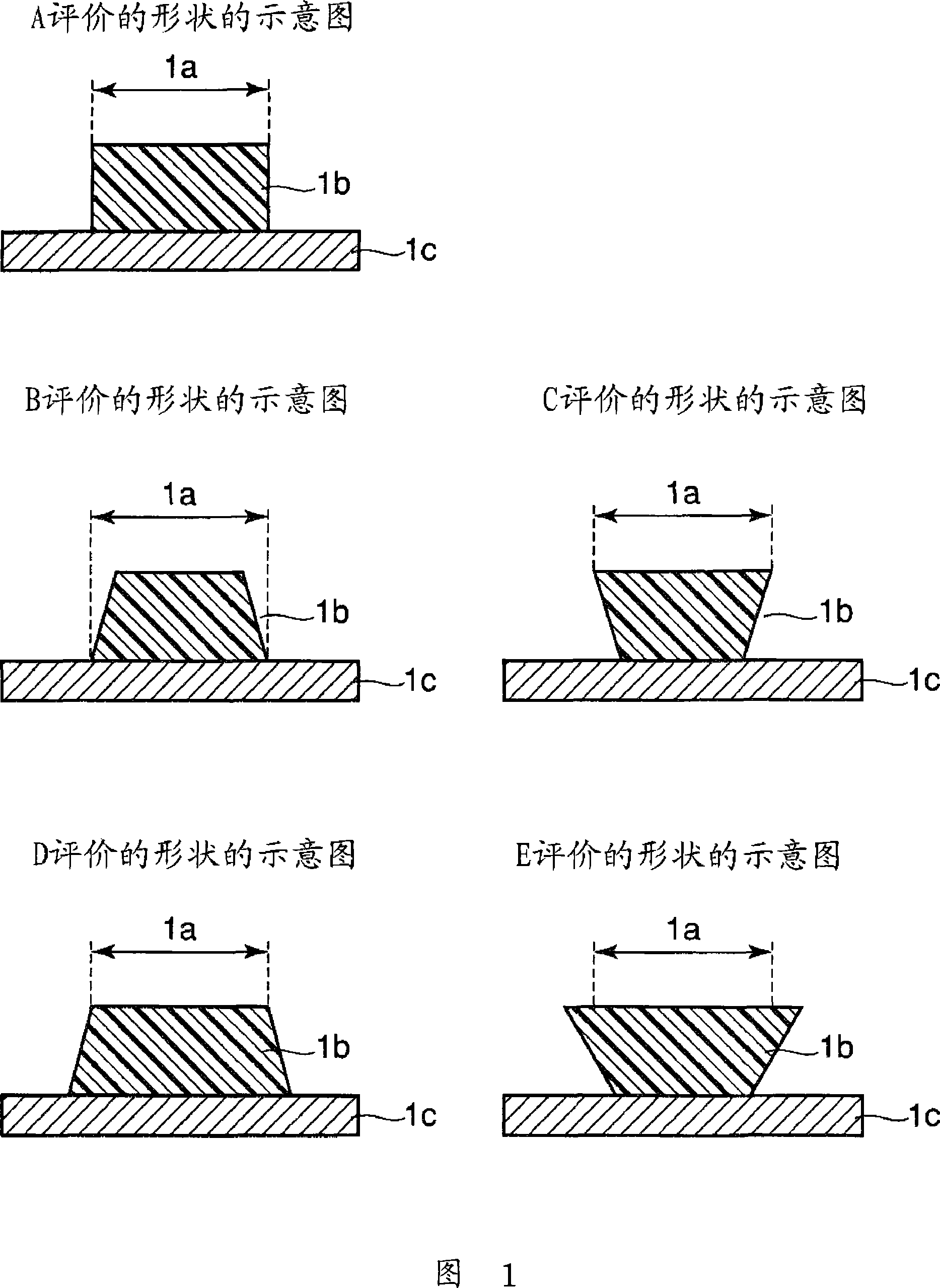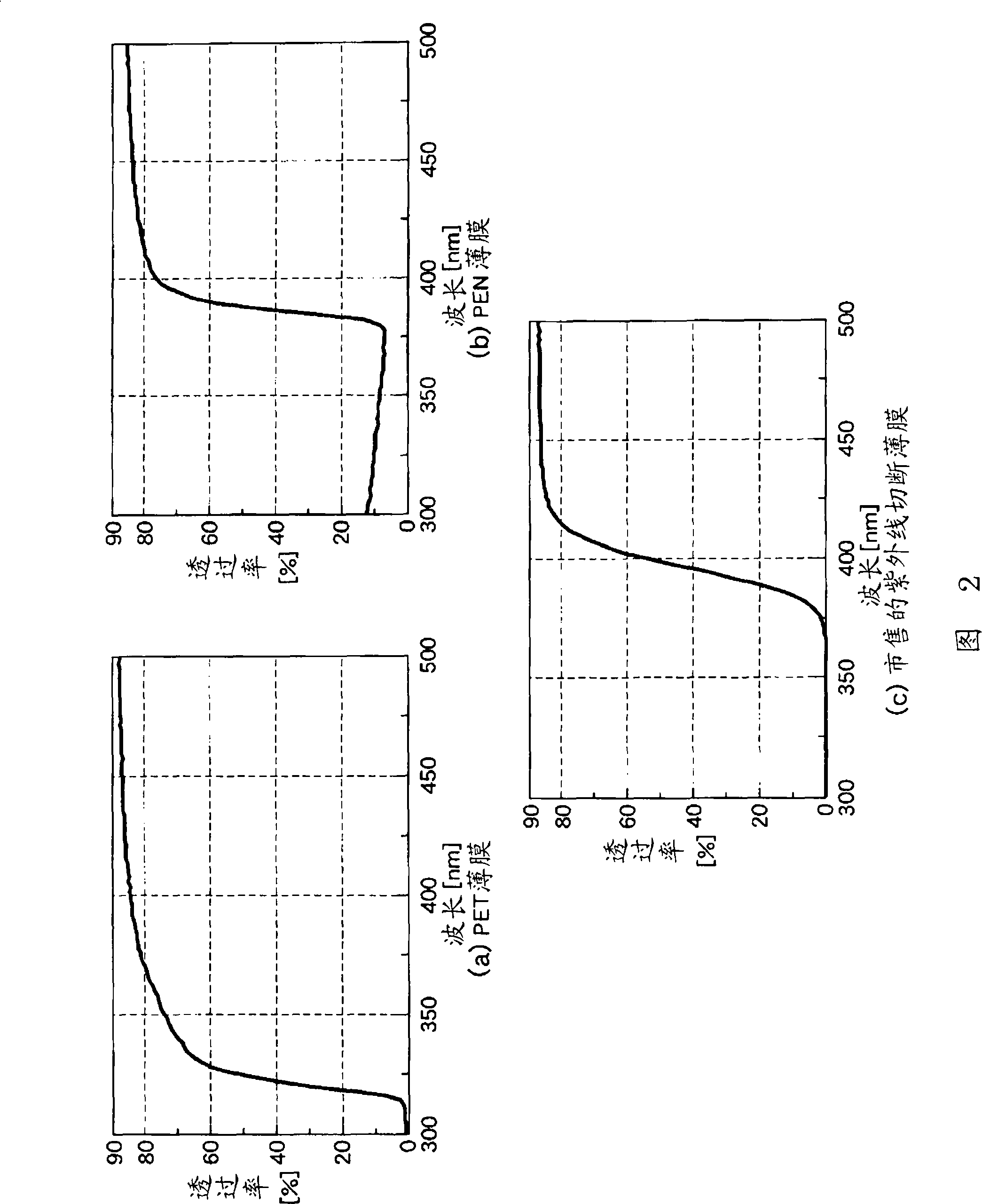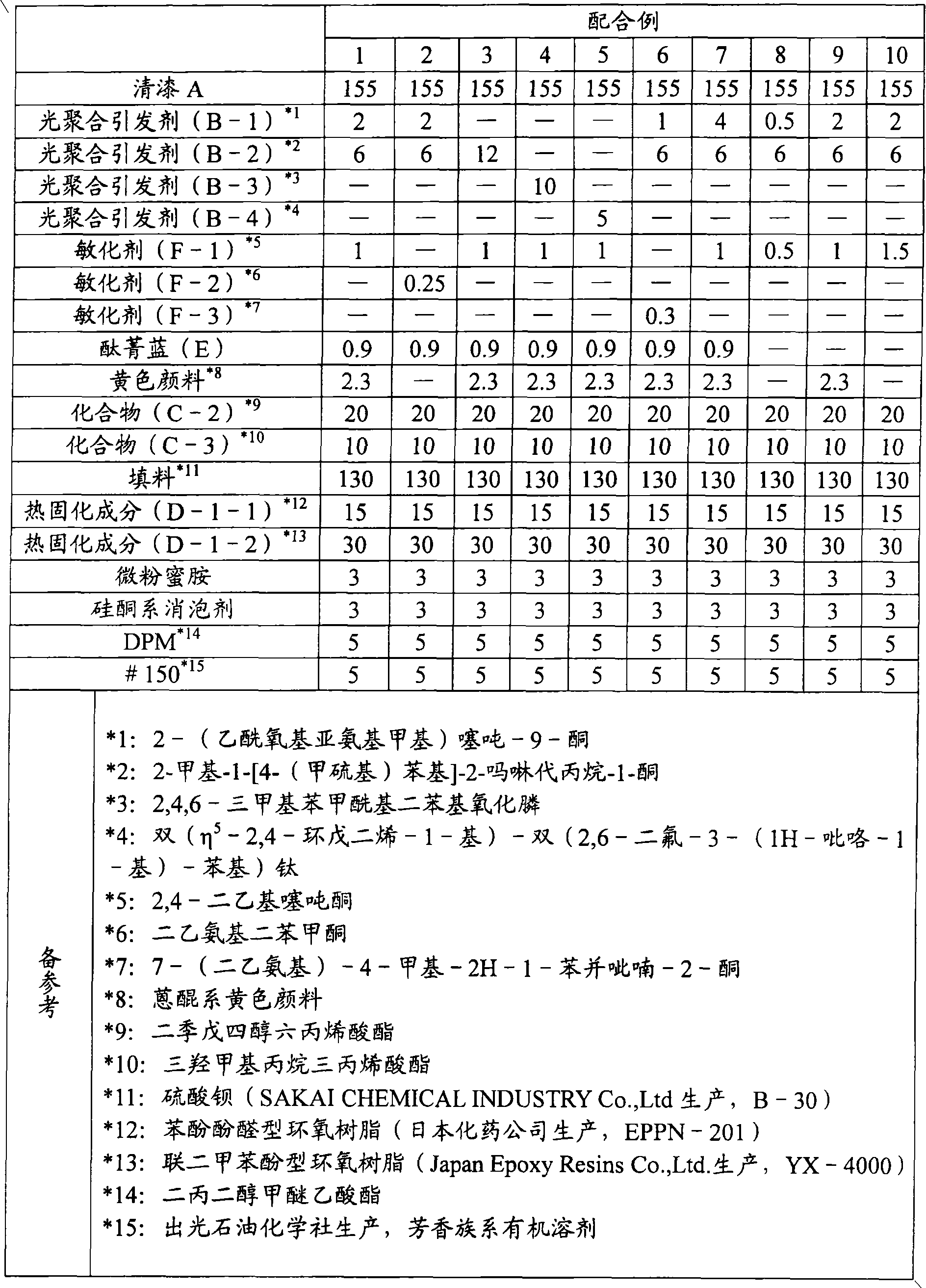Optical tool and method for forming soldering-resistant pattern
A pattern and solder mask technology, applied in the field of exposure processing, can solve the problems of line width, through hole diameter smaller than the design value, vignetting on the surface layer, etc.
- Summary
- Abstract
- Description
- Claims
- Application Information
AI Technical Summary
Problems solved by technology
Method used
Image
Examples
Embodiment
[0123] Hereinafter, although an Example and a comparative example are shown and this invention is concretely demonstrated, it is needless to say that this invention is not limited to a following example.
Synthetic example 1
[0125] Add 660 g of cresol novolak type epoxy resin (manufactured by Nippon Kayaku Co., Ltd., EOCN-104S, soften Point 92°C, epoxy equivalent = 220g / equivalent), 421.3g carbitol acetate and 180.6g solvent naphtha, heated to 90°C and stirred to dissolve. Then, it was cooled to 60° C., 216 g of acrylic acid, 4.0 g of triphenylphosphine, and 1.3 g of methylhydroquinone were added, and reacted at 100° C. for 12 hours to obtain a reaction product having an acid value of 0.2 mgKOH / g. 241.7 g of tetrahydrophthalic anhydride was added thereto, heated to 90° C., and reacted for 6 hours. Thus, the content of non-volatile matter = 65% by mass, solid content acid value = 77 mgKOH / g, double bond equivalent (g weight of resin per 1 mole of unsaturated group) = 400 g / equivalent, and weight average molecular weight = 7000 was obtained. A solution of a carboxylic acid photosensitive resin (A). Hereinafter, the solution of this carboxylic acid-containing photosensitive resin is called varnish ...
Embodiment 1
[0153] (Example 1: Using a PEN-based film as a protective film / resist film thickness 18 μm)
[0154] The same test as in Comparative Example 1 was performed except that a polyethylene naphthalate film was used instead of the polyethylene terephthalate film as the protective film. The evaluation results of the cross-sectional shapes of the obtained solder resist patterns are the same as those in Table 3. In addition, the photomask was in a clean state with no defects and no resist adhesion.
PUM
| Property | Measurement | Unit |
|---|---|---|
| thickness | aaaaa | aaaaa |
| acid value | aaaaa | aaaaa |
| acid value | aaaaa | aaaaa |
Abstract
Description
Claims
Application Information
 Login to View More
Login to View More - R&D
- Intellectual Property
- Life Sciences
- Materials
- Tech Scout
- Unparalleled Data Quality
- Higher Quality Content
- 60% Fewer Hallucinations
Browse by: Latest US Patents, China's latest patents, Technical Efficacy Thesaurus, Application Domain, Technology Topic, Popular Technical Reports.
© 2025 PatSnap. All rights reserved.Legal|Privacy policy|Modern Slavery Act Transparency Statement|Sitemap|About US| Contact US: help@patsnap.com



